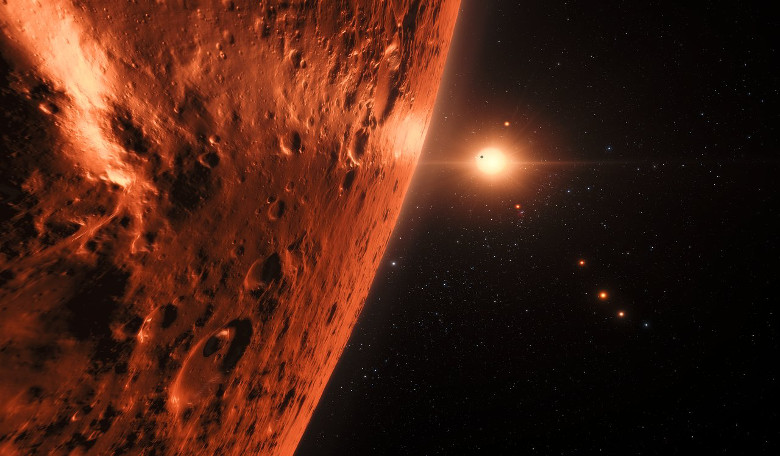Finding seven earth-sized planets orbiting the nearby dwarf star TRAPPIST-1 was one thing, now astronomers suggest that three of the planets might still harbour substantial amounts of water, adding further weight to the idea that this trio of exoplanets could indeed be habitable.
Using the NASA/ESA Hubble Space Telescope, an international team of astronomers followed up the initial discovery, with observations to study that amount the amount of ultraviolet radiation received by the individual planets of the system, to ascertain the likelihood of water being present.
“Ultraviolet radiation is an important factor in the atmospheric evolution of planets,” explains team leader Vincent Bourrier from the Observatoire de l’Université de Genève. “As in our own atmosphere, where ultraviolet sunlight breaks molecules apart, ultraviolet starlight can break water vapour in the atmospheres of exoplanets into hydrogen and oxygen.”
This happens when photons of a certain energy break the bonds of molecules into their constituent atoms. This is a process known as photodissociation and in the case of a water molecule, once it is broken up, the very light hydrogen atoms can escape the exoplanets’ atmosphere. Instruments such as the Space Telescope Imaging Spectrograph (STIS) onboard Hubble can then be used to detect the departing hydrogen.
The amount of ultraviolet radiation emitted by TRAPPIST-1, does indeed suggest that the planets could have lost gigantic amounts of water – more than 20 Earth-oceans-worth of water for the inner two planets alone during the last eight billion years.
However, there is better news for the outer planets of the system, including three in the habitable zone – planets e, f and g – as observations suggest each of these outliers may have lost less than three Earth-oceans of water, leading to the idea that water in some form could be retained on their surfaces; a possible ideal location in which to search for life.
“While our results suggest that the outer planets are the best candidates to search for water with the upcoming James Webb Space Telescope (JWST), they also highlight the need for theoretical studies and complementary observations at all wavelengths to determine the nature of the TRAPPIST-1 planets and their potential habitability,” concludes Bourrier.
With an anticipated launch date of October 2018 for the JWST, hopefully scientists will not have to wait too long before surface water can be confirmed or not.











